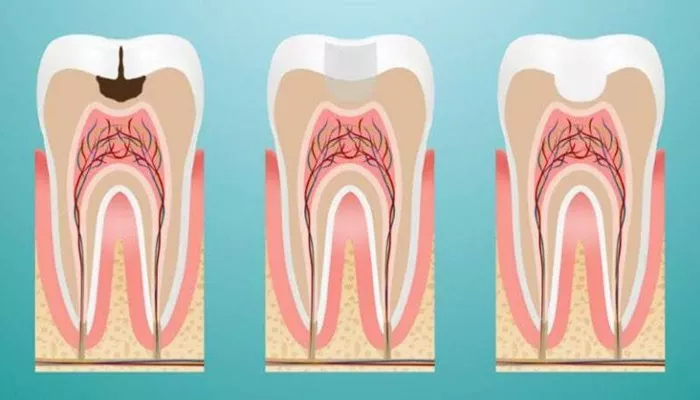Dental health is paramount for overall well-being, and one of the essential aspects of dental care involves managing tooth decay and damage. When a tooth is compromised due to decay or injury, dentists often resort to fillings to restore its function and prevent further deterioration. While permanent fillings are the ultimate solution, temporary dental fillings play a critical role in immediate dental care. This article delves into what temporary dental filling material is, its applications, types, and maintenance tips.
What Is A Temporary Dental Filling?
A temporary dental filling is a non-permanent material used to fill cavities or protect damaged teeth until a more durable solution can be applied. These fillings are commonly used in various scenarios, such as after a root canal procedure, when a dentist needs to assess the condition of a tooth further, or when immediate relief from pain is necessary. Unlike permanent fillings, which are designed to last for many years, temporary fillings are intended for short-term use, typically lasting from a few days to several weeks.
Purpose of Temporary Fillings
Temporary fillings serve multiple purposes:
Protection: They shield the exposed areas of a tooth from bacteria and irritants that can lead to infection.
Pain Relief: They provide immediate relief from discomfort caused by decay or damage.
Stabilization: They stabilize the tooth until a permanent filling or other treatment can be performed.
Assessment: They allow dentists to evaluate the condition of the tooth over time without committing to a permanent solution immediately.
Types of Temporary Filling Materials
Temporary dental fillings are made from various materials that differ in properties and applications. The most common materials include:
Zinc Oxide Eugenol (ZOE): This material has soothing properties that help alleviate pain and sensitivity. It is often used in situations where nerve irritation is present.
Glass Ionomer Cement: Known for its ability to bond with tooth structure and release fluoride, glass ionomer is often used for its aesthetic appeal and effectiveness in preventing further decay.
Zinc Phosphate Cement: This material is strong and durable but not as commonly used for temporary fillings due to its rigidity.
Intermediate Restorative Materials (IRM): These materials are designed for longer-lasting temporary solutions and provide good strength and sealing abilities.
Composite Resins: Although less common as temporary materials due to their cost and complexity, they can be used when aesthetics are a priority.
The Process of Applying Temporary Fillings
The procedure for applying a temporary filling generally follows these steps:
Numbing the Area: The dentist will administer local anesthesia to numb the affected tooth and surrounding gums, ensuring patient comfort during the procedure.
Cleaning the Cavity: The dentist removes any decayed or damaged tissue from the tooth using specialized dental tools.
Preparing the Filling Material: Depending on the type of temporary filling material chosen, it will be mixed or prepared according to specific guidelines.
Filling the Cavity: The prepared material is placed into the cleaned cavity, ensuring all voids are filled adequately.
Shaping and Smoothing: The dentist shapes the filling so that it aligns properly with the patient’s bite and smooths any rough edges.
When Are Temporary Fillings Used?
Temporary fillings are utilized in various situations, including:
Emergency Situations: If a patient experiences sudden pain due to a cavity, a temporary filling can be applied quickly to alleviate discomfort.
Before Permanent Treatments: After procedures like root canals, dentists often place temporary fillings while waiting for permanent crowns or fillings to be made.
Tooth Sensitivity Management: In cases where nerves are irritated or inflamed, temporary fillings can help soothe the area until further treatment is needed.
Multi-Visit Treatments: For complex dental issues that require multiple appointments, temporary fillings can be used between visits.
How Long Do Temporary Fillings Last?
The lifespan of a temporary filling can vary based on several factors:
Material Used: Some materials may last longer than others; for example, glass ionomer may last several weeks compared to zinc oxide eugenol.
Location in Mouth: Fillings in areas subject to heavy chewing forces may wear down faster than those in less stressed locations.
Patient Care: How well patients follow care instructions also affects longevity; avoiding hard or sticky foods can help maintain the integrity of the filling.
Typically, temporary fillings are designed to last from a few days up to 30 days. However, it is crucial for patients to return for permanent treatment as soon as possible because prolonged use of temporary fillings can lead to complications such as decay beneath the filling or loss of structural integrity in the tooth.
Caring for Temporary Fillings
While temporary fillings provide essential protection and relief, they require careful maintenance:
Dietary Considerations: Patients should avoid hard, sticky, or chewy foods that could dislodge or damage the filling. Soft foods like mashed potatoes or soups are preferable until a permanent solution is applied.
Oral Hygiene Practices: Gentle brushing with a soft-bristled toothbrush is recommended around the filled area. Flossing should be done carefully to avoid pulling out the filling.
Monitoring for Issues: Patients should watch for signs that indicate problems with their temporary filling, such as increased pain, sensitivity, or if the filling comes loose.
Conclusion
Temporary dental fillings play an essential role in modern dentistry by providing immediate relief and protection while waiting for more definitive treatments. Understanding their purpose, types of materials used, application process, duration of effectiveness, and care instructions can empower patients to manage their dental health effectively. While they serve as an excellent short-term solution, it remains crucial for patients to follow up with their dentist for permanent restoration options to ensure long-term dental health and functionality.

